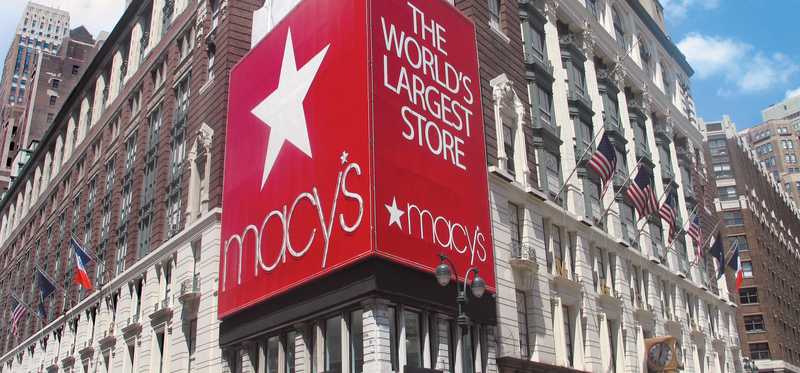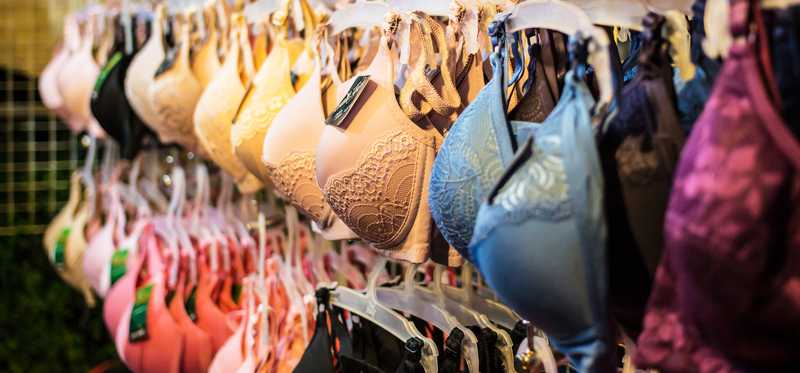These 10 Retailers Need a Big Fourth Quarter

These 10 Retailers Need a Big Fourth Quarter
A make-or-break quarter ahead
The fourth quarter isn’t just a big deal in sports. It’s also a make-or-break time in the retail industry. During the last three months of the retail fiscal year, which is generally November, December, and January, retailers have their biggest quarter of the year in terms of sales and profits thanks to the holiday shopping season.
Some retailers even make more than half of their profit during the fourth quarter as waves of shoppers and gift-giving customs creates a valuable opportunity for these stores.
But with fears of a recession and the threat of a trade war lurking, as well as rising competition from Amazon and other online competitors, some retailers are in a tough spot. For these 10 companies, it’s crucial that they get a win in the key holiday quarter.
Previous
Next

1. J.C. Penney
After Sears, J.C. Penney (NYSE: JCP) has probably had the biggest collapse of any retailer this decade. The company began imploding in 2012 during the misguided tenure of former CEO Ron Johnson, who did away with discounts, driving away a sizable portion of the J.C. Penney customer base and causing same-store sales to plunge 25% in a single year.
Since then, despite a parade of new CEOs, the company has proven unable to catch up with its peers, stop declining sales, or turn a profit. Recently, the department store has begun to face the threat of being delisted from the New York Stock Exchange as its share price has fallen under $1. Penney is counting on a better-than-expected fourth quarter to give it a shot at a comeback. Without one, the company is likely to move closer toward an eventual bankruptcy.
ALSO READ: 1 Key Sign That a J.C. Penney Comeback Is Still Possible
Previous
Next

2. Gap
The dominant apparel retailer a generation ago is far from the leader today. Gap (NYSE: GPS) Inc., which also owns Banana Republic, Old Navy, and Athelta in addition to its namesake brand, has lost ground to fast fashion competitors like H&M and Uniqlo. Its legacy brands like Gap and Banana Republic have struggled in particular.
Gap shares are now down nearly 50% over the last year and the stock is hovering around 10-year lows. Gap is also planning to spin off Old Navy next year, its biggest and fastest-growing chain.
Therefore, it is incumbent upon the company to deliver strong results in the holiday quarter. While Gap isn’t in danger of going out of business, the retailer is losing relevance and closing stores, and the holiday period is as good a time as any to reverse that tide.
Previous
Next

3. Macy’s
The quintessential department store chain hasn’t escaped the recent retail malaise. Macy’s (NYSE: M) has gotten pounded this year on concerns about tariffs and as the company has dialed back guidance, a sign that it continues to feel pressure from new competition.
Similar to Gap, Macy’s stock is down nearly 60% over the last year and is also trading near a 10-year low. However, the good news for investors is that Macy’s is cheap according to conventional valuation measures, trading at a P/E of less than 5, and the holiday quarter is a key one for the company as it makes the vast majority of its profits in the fourth quarter. This year, analysts expect the company to earn $2.08 per share in the fourth quarter, or nearly 70% of its projected per-share profit for the year at $3.07.
Previous
Next

4. Bed Bath & Beyond
Unlike most retailers, Bed Bath & Beyond (NYSE: BBBY) doesn’t end its fiscal year during the holiday quarter, but nonetheless the home goods chain, which also owns Buy Buy Baby and World Market, makes a majority of its profit during the holidays.
Bed Bath and Beyond stock has experienced an epic collapse recently as the stock is down 85% over the last five years. It’s cavernous stores have proven a poor fit for the e-commerce era, and activist investors have jumped on the stock.
That means the holiday quarter will be a crucial testing ground after those investors pushed out CEO Steven Temares, slashed the corporate workforce, and have urged management to consider selling its secondary chains. Recently, the company announced plans to refresh 160 stores before the holidays.
Previous
Next

5. Victoria’s Secret
The L Brands (NYSE: LB) subsidiary has had a tough time in recent years. The brand that was once synonymous with lingerie has given up market share as tastes have changed favoring more “real” brands like American Eagle’s Aerie. Victoria’s Secret has also seemed out of step with cultural trends like the #MeToo Movement.
L Brands stock has fallen nearly 80% over the last three years, a sign that investors have essentially given up on the stock even though it’s still profitable. The holiday quarter generates nearly all of its profit as lingerie remains a popular gift, and the holidays are a time for parties and romance. Victoria’s Secret’s comparable sales have been plunging, but if the company can show improved results during the fourth quarter, the stock could recover some of its losses.
Previous
Next

6. Nordstrom
This year’s holiday season will be pivotal for yet another department-store chain, Nordstrom (NYSE: JWN). The high-end retailer is opening its flagship women’s store in New York this October, which management is convinced will be its biggest in sales volume by far, and the company is in need of a win after a rough year.
Shares are down more than 50% over the last year as sales have fallen as the company has struggled with basic execution and has seen growth slow in both digital sales and in its off-price Rack division.
A strong fourth quarter, during which the company is expected to make nearly half of its annual profit, would help reassure investors that Nordstrom is still a “best-in-class” retailer.
Previous
Next

7. Children’s Place
Children’s Place (NYSE: PLCE) stock has struggled over the past year as the company’s growth took a hit from the bankruptcy and liquidation of rival Gymboree, which weighed on the company’s performance in the first half.
However, with that event behind it, the company should soon return to growth, and the good news for investors is that Children’s Place makes nearly all of its profit in the second half of the year, thanks to the back-to-school and holiday shopping season.
With the stock down 40% over the last year, a return to solid growth in the fourth quarter could set the company on track to regain some of those losses.
Previous
Next

8. Chico’s FAS
Another struggling apparel retailer, Chico’s FAS (NYSE: CHS) has gotten lost in the shuffle lately along with many other mall-based retailers. The stock is down about 60% over the past year as comparable sales have plunged, and investors sense doom, especially with higher tariffs on China coming.
Activist investor Sycamore Partners has pounced on the stock and brought in a new CEO, a sign that this holiday season could be a crucial turning point for the company.
Analysts aren’t anticipating much of a reprieve for the White House Black Market owner as they are projecting a loss for the fourth quarter, but if the company is going to make a turnaround, the holiday season would be the time to do it.
Previous
Next

9. Michaels
Like many of the other companies on this list, Michaels (NYSE: MIK), the arts-and-crafts chain, is showing signs of buckling under the pressure of e-commerce competition. Although its financial performance appears to be stable for the time being, the stock has fallen more than 50% this year, amid concerns about its debt burden, long-term strategy, and questionable pricing decisions.
Michaels is expected to make a majority of its profit and more than a third of its revenue in the fourth quarter this year. A strong performance could send the stock rocketing higher, considering that shares now look dirt cheap according to conventional metrics.
Previous
Next

10. Barnes & Noble
Barnes & Noble may have been taken private earlier this year by private equity firm Elliott Management, but that doesn’t mean the retailer’s survival is guaranteed. B&N’s struggles in the e-commerce era have been well documented as the company has experienced years of declining traffic while Amazon has come to dominate all aspects of the book market, including bookselling, e-books and e-readers, and even publishing.
Elliott Management has tapped James Daunt, an Englishman who founded a small but successful chain of independent bookstores in the U.K., to lead B&N’s turnaround.
The holidays are always an important time for the retailer. In recent years, it’s turned to toys and games to pad flagging book sales, so gift-giving has become a bigger part of the company’s business than it once was.
Previous
Next

Time is ticking
Many of the current challenges that these retailers are facing, whether it’s the threat of Amazon and other online competitors, changing shopping habits, or fears of a recession, are only going to get worse.
That’s why these companies must make the most of the opportunity that the holiday season presents. If they can’t show growth and turn a solid profit during the peak shopping time of the year in one of the strongest economies on record, they likely won’t be around to celebrate the holidays much longer.
John Mackey, CEO of Whole Foods Market, an Amazon subsidiary, is a member of The Motley Fool’s board of directors. Jeremy Bowman owns shares of Amazon, Nordstrom, and The Children’s Place. The Motley Fool owns shares of and recommends Amazon. The Motley Fool recommends Nordstrom and The Michaels Companies. The Motley Fool has a disclosure policy.
Previous
Next
Invest Smarter with The Motley Fool
Join Over Half a Million Premium Members Receiving…
- New Stock Picks Each Month
- Detailed Analysis of Companies
- Model Portfolios
- Live Streaming During Market Hours
- And Much More
READ MORE
HOW THE MOTLEY FOOL CAN HELP YOU
-
Premium Investing Guidance
Market beating stocks from our award-winning service
-
The Daily Upside Newsletter
Investment news and high-quality insights delivered straight to your inbox
-
Get Started Investing
You can do it. Successful investing in just a few steps
-
Win at Retirement
Secrets and strategies for the post-work life you want.
-
Find a Broker
Find the right brokerage account for you.
-
Listen to our Podcasts
Hear our experts take on stocks, the market, and how to invest.
Premium Investing Services
Invest better with The Motley Fool. Get stock recommendations, portfolio guidance, and more from The Motley Fool's premium services.